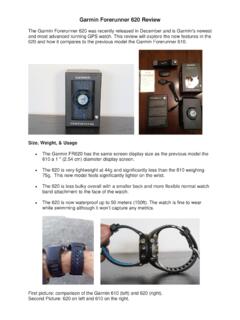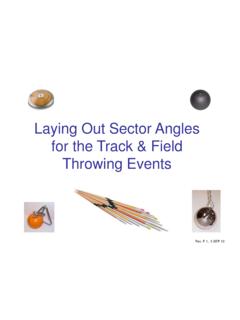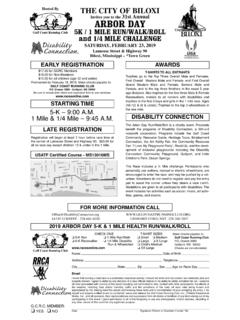Transcription of Why the Magic Mile? - Jeff Galloway
1 Why the Magic mile ? The Magic mile is a unique tool to help members determine realistic goals! The miles will help show progress as runners usually improve each time. The runner is getting faster and stronger. The Magic mile is a great team building exercise. Encourage the groups to cheer each other on. The Magic mile will help determine: If the goal pace is realistic. How much improvement can be expected, and whether someone is on track to meet the goal. Running the Magic mile takes the guesswork out of goal setting. This often involved putting the reins on the ego, which will talk the person into goals that are not within their current capabilities.
2 These formulas will allow one to predict race time by running a timed mile . During the training season, the group will run a Magic mile on a set schedule, depending on the training goal. Guidelines for running the Magic mile : Go to a track, or other accurately measured one- mile course. It is not necessary to use a track. If you don't have one available, use a GPS mapping tool on line, such as or and find a flat, uninterrupted one mile stretch. Warm up by walking for five minutes, then running one minute and walking one minute. Follow that by running an easy half mile .
3 Run four acceleration gliders. (See Marathon! Drills chapter). Run the one mile a little harder than your normal pace. Follow the walk break suggestion provided, or walk 30 to 45 seconds at each quarter mile . For the Magic mile , don't run all-out from the start. Ease into pace after first half mile or 2 laps. Cool down with by reversing the warm up. Don't use a treadmill because they tend to be notoriously uncalibrated, and often show a farther and faster distance that was actually run. On each successive MM. try to better the pace by 20 to 30 seconds.
4 Use the formula provided to see what time is predicted in the goal race. How hard should the Magic mile be run? On the first MM, advise the groups to run just slightly faster than normal pace. On each successive MM, try to beat the previous best time by 20 to 30 seconds. Take walk breaks as needed or every quarter mile . After the first Magic mile they should be huffing and puffing but not gasping for air. A track is the best venue. If not running on a track, measure the course into quarter miles, and mark them. Tell the runners in your group how they can check pace at each quarter mile to improve pacing.
5 Run the first lap (quarter mile ) slightly slower than you think you can average. Take a short walk break. If you aren't huffing and puffing you can pick up the pace a bit on the second lap. Most benefit from taking a walk break after the second lap. It is ok to be breathing hard on the last lap. When you finish, you should feel like you couldn't run more than half a lap further at that pace (if that). You may find that you don't need many walk breaks during the test experiment and adjust. Improvement Possibilities It is fine to choose a time goal for the goal race which is faster than predicted by the Magic mile .
6 As they do the speed training, the long runs and the Magic Miles, they should improve. For prediction purposes, as they take this "leap" to a goal, we suggest no more than a 3-5% improvement in a 3 month training program. To Predict the MM pace to longer distances from one mile : 5K Take the one mile time and add 33 seconds 10K Take the one mile time and multiply by Half Marathon: Take the one mile time and multiply by Marathon: Take the one mile time and multiply by EXAMPLE: One mile Test Time: 8:00 minute mile = 10:24 mile time for a marathon 10:24 per mile = just under a 4:30 marathon time Train Pace = 12:24 minutes per mile , or 10:30 pace group (adjusted for temperature).
7 Walk Break Ratio for 12:24 per mile = 2/1. 3-5% Improvement 4:30 marathon time 4:21:54 - 4:16:30 is possible.





